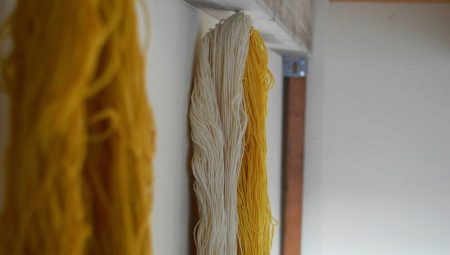How to straighten yarn after unraveling?

Knitters with experience know - it so happens that a thing knitted by their hands becomes unnecessary. There are many reasons for this: the child grew up, got fed up with the sweater, the blouse was leaking on the elbows, someone did not like the thing, he refused to wear it. Do not waste the same yarn. She's still good and might come in handy. Real craftswomen never throw away used knitted items. The product is dismissed and the threads are given a new incarnation.


Straightening with a microwave
The method impresses with its simplicity. The loosened thread is not twisted tightly into balls, folded in a plastic bag and sent to the microwave for 15 seconds. Sometimes the wool becomes thickened by the action of steam, so the threads are not steamed.

How to straighten with an iron?
The method is convenient when there is no need to dissolve the entire product, but only part of it. This does not cut the thread. It is wound into a ball and, together with an untied thing, is placed in one container. The curly thread is pulled through an ironing board, on the other side of which another container is installed to receive the straightened part.
On an ironing board, cover the thread with a damp cloth and iron it with an iron. The damp cloth produces steam and it should be constant.

You should not put pressure on the iron in order to give room to steam.
other methods
Threads obtained by loosening old things have been used at all times. They have a curly appearance, it is inconvenient to knit from them, and the thing turns out to be unevenly knitted. Most often, there is a skewed collar or armhole, different sleeves. This will definitely affect the first wash. There are old methods of straightening the thread, some of which have appeared quite recently.How to use – will tell you the structure of the fibers.


Straightening the threads in a multicooker
Not all knitting lovers like to control the process by standing over the steam, so the yarn is placed in a multicooker for 30 minutes. Or the threads are wound without strong tension on a toilet roll. Water is poured so much that it does not fall into the steam basket, but does not boil away at all... From time to time, the contents of the basket are turned over for even heating. Wooden tongs from a hardware store work best.

Using a vertical steamer
A skein is wound from a thread, suspended on a rope, a weight is suspended from the bottom. Lead along the skeleton with an iron with a steaming function or a vertical steamer. The sack is turned from time to time. After the end of the process, the threads are laid out on a flat surface for natural drying.

Grandma's method
A wool product should first be washed with a special product, dried and dissolved. When unraveling, the threads are immediately wound into the skeins. In this case, the hands of a gentleman, an inverted stool or the back of a chair will help. Advanced knitters use their own elbow. Conditions:
-
do not pull the thread;
-
small frames.
Pull the prepared skein in 4 places with threads of a different color. The tension should be moderate: the yarn expands in volume and the threads do not get tangled. The dumplings are washed with shampoo or other means for wool, after which a pull-off weight is suspended. Some put the sacks on 2 chairs, the tension is provided by the mop. The water flows into the basin provided.

The lower the volume of the sack, the faster the yarn dries.... Drying takes place over several hours or several days depending on weather conditions.
Do not dry woolen threads near the radiator, as their structure may turn out to be uneven.
Straightening with a teapot
An enamel teapot is taken, better than the old model, 1/3 of the volume of water is poured into it. A woolen thread is pulled through the spout into the teapot and taken out through the upper opening, slightly covered with a lid. Instead of a kettle, use a saucepan with a hole in the lid.

The water in the kettle boils, the heat is reduced to a constant low boil, the lid is placed at an angle. The balls of woolen yarn are folded into a basin. Whoever winds the steamed yarn sits down opposite. The straightened thread is formed into skeins or into a loose fluffy ball. If you overtighten it, the elasticity will disappear.
Straightening with a colander
The steamer method is used. Place the colander on top of a tall saucepan to keep it from falling through. The woolen thread is placed in a colander, the water boils, the skein is moistened, it is turned over so that the heating proceeds evenly.
The colander must be plastic, as the metal colander can become very hot. Then the thread will stick to it or melt, which is even worse. A weight is suspended from the formed wet sacks and dried. The thread is wound into balls only in a dry state, otherwise mold will start inside.

The simplest unassuming way: wound a tight ball, moistened under the tap, wring out and put to dry on the heating battery. Until the morning, the yarn dries up, you can immediately start knitting a new product.
They use threads for knitting things that are worn at home, these are sweaters, leggings, socks and other trifles. This results in significant savings. It becomes irrelevant if the thing is getting ready for the exit.

All methods of straightening the thread are good, each knitter chooses what is closer to her soul.
Finally, a useful video on how to straighten the yarn after unraveling.








